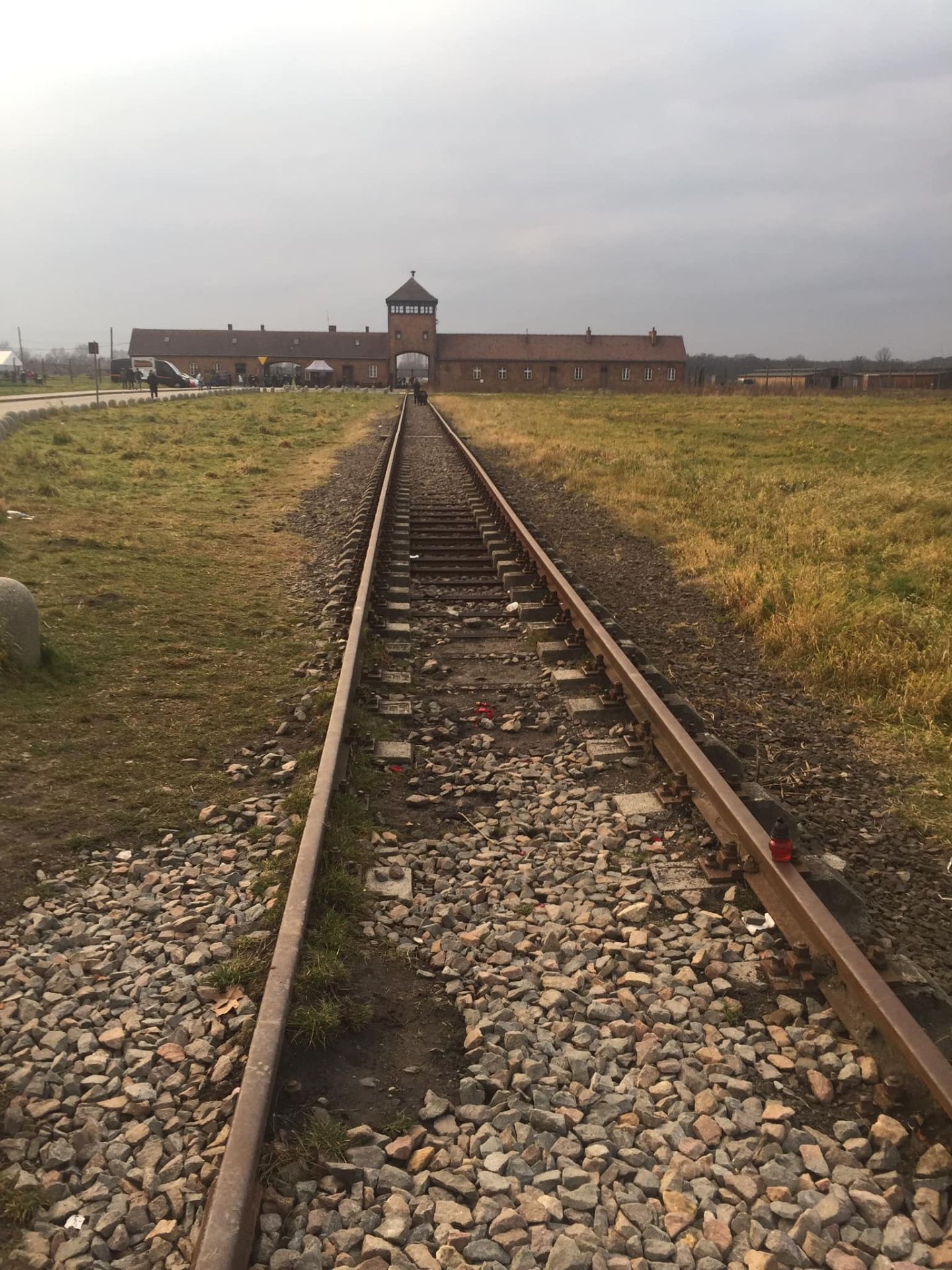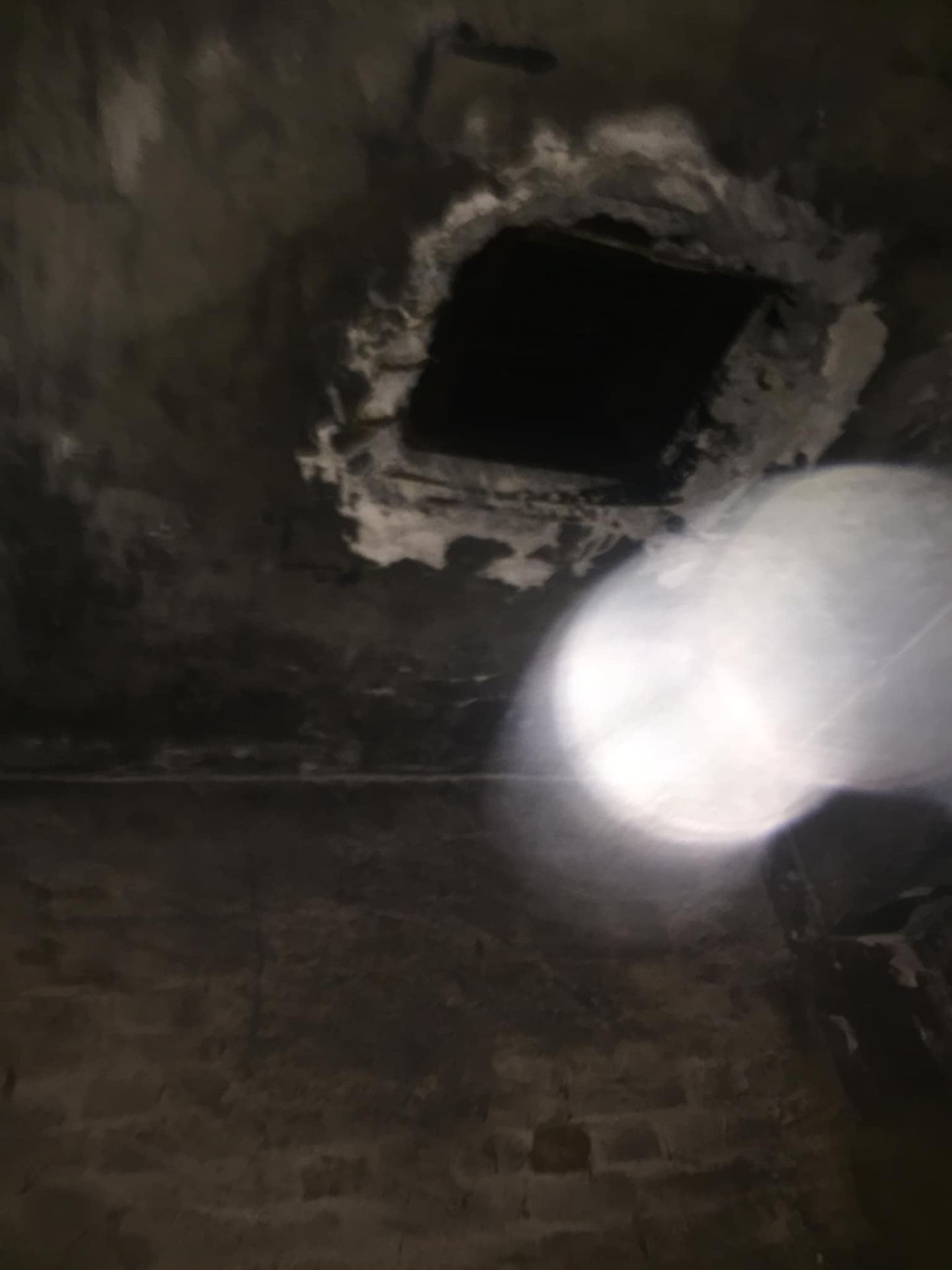



As someone who takes a keen interest in history, I found the idea of visiting Auschwitz difficult. I wanted to see the reality of what happened, to understand the brutal truth of the holocaust. However, I also felt like such a place shouldn’t be packed with tourists’ wielding cameras and iPhones.
I set off from Krakow city centre on a coach filled with British, Italian, and Spanish tourists. The tour guide gave us a detailed speech on what we should expect upon arrival at the camp. He also highlighted the many remnants of the infrastructure left behind during the Nazi occupation of Poland. Old mines and factories, even a palace on the mountainside used by Heinrich Himmler and high-ranking SS officers during their visit to Auschwitz.
After roughly an hour, we pulled up into the car park next to Auschwitz 1, the first stop on our tour. Auschwitz is split into three main camps and other surrounding facilities. The main camp is Auschwitz I, followed by Auschwitz II Birkenau, famed for its sheer scale, and Auschwitz III Monowitz, predominately used as a labour camp.
Due to Covid-19, the tours were at staggered intervals to avoid mass crowds. We waited in the cafeteria and shopping area. Once again, this added to my preconceived concerns that Auschwitz shouldn’t be used as a place to make money. Yet, upon speaking to my tour guide, I soon learned that all the income generated is used to maintain the museum and pay for the research into local and Holocaust-related history.
Our time came to enter the start of the museum/tour. It was like passing through passport control in an airport. It has security guards, metal scanners, and full-body searches. This is important for several reasons. In the past, sadly, vandalism and theft aren’t uncommon. I was glad to see the guards took this seriously.
We were each given a pair of headphones, the tour guide spoke via a microphone into each of our headsets, allowing for an immersive experience while walking around the camp. The tour began at the main gate to the camp. There was an eerie silence surrounding the entrance; the tour guide spoke in detail as we walked past each building. Each barracks was known as a block. When we entered the first block, we saw photos of Jews boarding trains and mass crowds of prisoners going through the “selection process” that determined whether someone was fit enough to be of use to the Nazis. The young and able lived, while the old, weak, and children who were unable to work went in a different direction. Unknowingly they were soon heading to their deaths.
We then walked upstairs to a room that showed the layout of the gas chambers. The model portrayed the industrial scale of the operation. The next block was the moment I realised the gravity of what happened here. Behind glass windows sat thousands of shoes, some small enough to fit a toddler, left behind by the victims. Other possessions such as hats, glasses, briefcases, and prams were also on display.
In the final room, our tour guide made it clear that no photos are permitted. He explained that we might want to leave promptly if anyone gets overly upset. We allowed one group to leave before we entered. Everyone exiting the room had teary eyes. I didn’t know what to expect. Upon entry, it took a second to digest what my eyes were seeing. Mountains upon mountains of human hair; the Nazis would keep the hair shaved from the prisoners to sell and use in various products. This brought home the absolute evil that created these camps.
The tour guide was incredibly passionate and informative. Throughout the tour, he answered every question in detail and gave time to each individual on the tour. Next, we saw the conditions of the living quarters. Hard wooden beds, unsanitary toilets, and little ventilation. Then, we saw the ‘shooting wall’ where hundreds of victims were forced in front of a firing squad. We were invited to have a minute’s silence to remember those who were shot.
Finally, the last part of the tour at Auschwitz 1 was one of the only gas chambers left standing. The Nazis frantically attempted to destroy as much evidence of their crimes as possible prior to the camps being liberated. A dark empty room with a single beam of light stemming from a hatch in the ceiling used to drop a cyanide-based pesticide called Zyklon B into the chamber. It took as long as 50 minutes for the hundreds and sometimes thousands of men, women, and children to succumb to the gas. The next room had ovens with a sliding tray on each wide enough for a human body.
Everyone knows what happened here but to stand in the very same room is one of the most surreal and unnerving feelings I’ve felt. We left in silence and handed back our headphones to the tour guide. This concluded the tour of Auschwitz 1.
Next, we returned to the coach and headed to Auschwitz 2 Birkenau. The breadth of this camp is indescribable. A railway track spans for miles through the main entrance. A row of hundreds of chimneys left from the rubble of the living quarters showed how the enormity of Birkenau.
We entered the main gate known as Hell’s Gate, famed for its use in Schindlers List. We passed a group of Hasidic Jews singing traditional songs and praying. It was a touching moment.
We walked down the long path through the middle of the camp along the railway. The same railway used to ship millions of Jews and Hitler’s undesirables into Auschwitz. After walking a couple of miles, we reached a memorial built by the Soviets. Little’s known about what the monument depicts. My interpretation is that it represents the gas chambers and the liberation of Auschwitz.
We then saw the remains of two gas chambers. Once again, the scale was difficult to comprehend.
Lastly, we went to the women’s quarters. The living conditions here were significantly worse than in Auschwitz 1. Birkenau was mostly for Jews and other undesirables. While Auschwitz 1 had political prisoners. Birkenau’s sole purpose was to make Europe ”Judenrein” (free of Jews). Therefore, living quarters were not a priority, as it wouldn’t be long until they were killed; unlike other camps in Auschwitz where the prisoners acted as a workforce.
The weakest inmates slept on the brick floor, with three rows of wooden beds above. The strongest slept at the top in the summer to get the fresh air coming through the roof. In the winter, everyone huddled together to keep warm.
The tour guide ended by answering any final questions and thanked us for our participation. We concluded by wishing him well and giving him a round of applause.
I learned a lot from the tour and gained a new perspective on life, the significance of peace, and understanding our differences. We can never allow ourselves to let such evil grow to that size again, with modern-day politics becoming increasingly divisive and far-right rhetoric on the rise. It’s vital to remember our past to ensure that nothing on the magnitude of the Holocaust happens again.

Above ^ Hell’s Gate – The main entrance to Auschwitz II Birkenau. Famed for its use in the film Schindler’s List





Wow! Amazingly well written and moving Harry, great job!